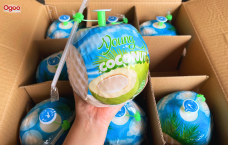Vietnam is one of the world's largest coconut producers, and stand for their quality, flavor, and nutritional value.
Vietnamese Fresh Coconut is a symbol of tropical refreshment and is widely appreciated for its natural sweetness and versatility. Grown in the fertile Mekong Delta, these coconuts are enjoyed worldwide for their hydrating water and nutritious flesh.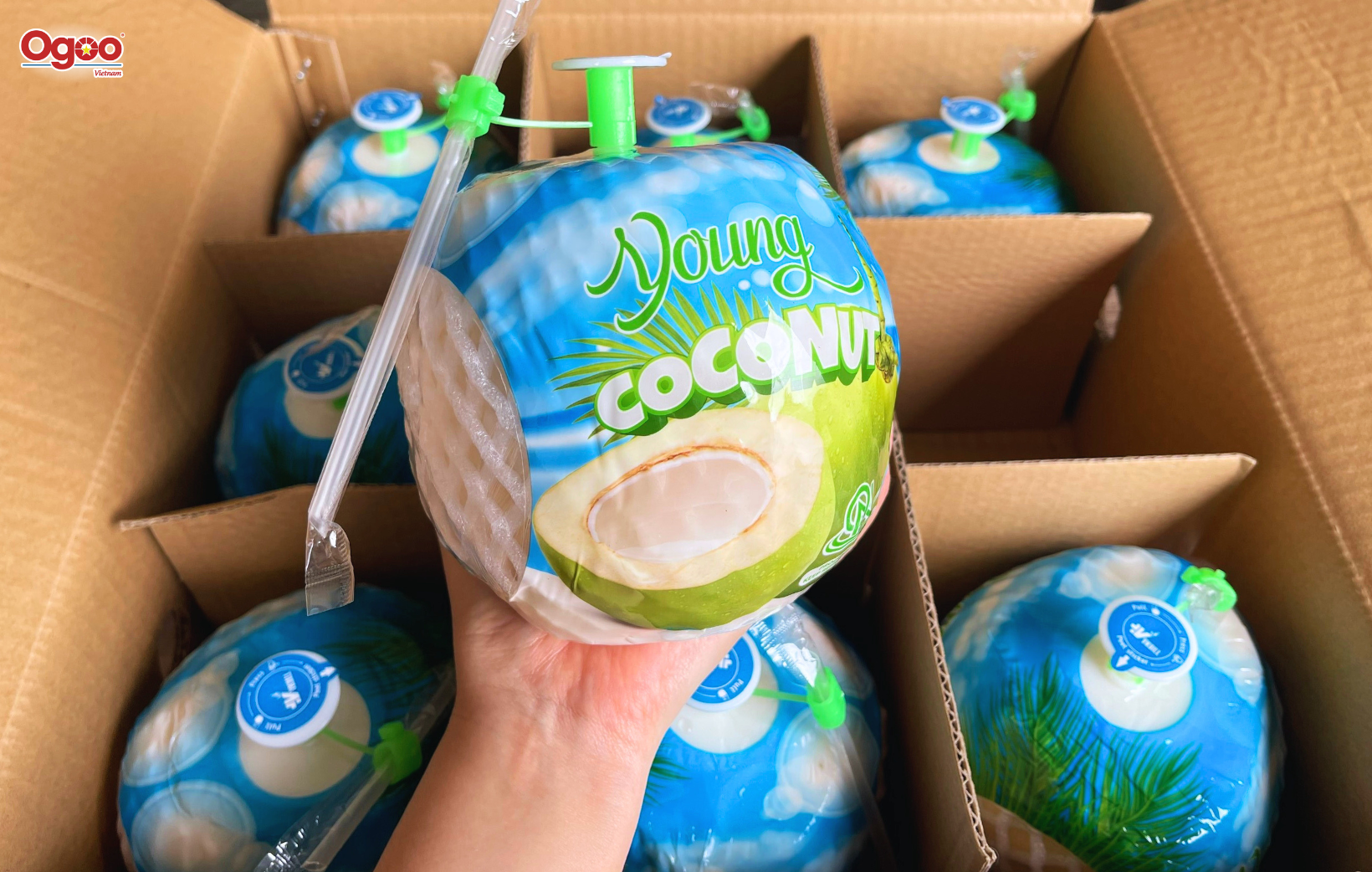
Young Coconut Cultivation
Young coconuts thrive in the warm, humid climate of southern Vietnam, especially in the Mekong Delta region. The coconuts are typically harvested at around 6-7 months old, when the water content is at its peak, offering the perfect balance of sweetness and hydration.
The trees are nurtured in nutrient-rich alluvial soil, with ideal temperatures ranging from 25 to 35 degrees Celsius. Young coconuts prefer a water pH of 5.5-6.5, and a saline water level of no more than 0.4% (4g/liter of water). This optimal growing environment ensures the fruit develops its signature taste and quality.
Young Coconut cultivation requires careful attention to climate, soil, and cultivation practices to ensure high-quality yields.
- Climate: Siamese Coconut trees thrive in tropical climates with high humidity and temperatures ranging from 25°C to 35°C (77°F to 95°F). They require plenty of sunlight and are typically grown in regions with annual rainfall of 1,500 to 2,500 mm.
- Soil: They prefer well-drained, loamy soils that are rich in organic matter. The Mekong Delta's alluvial soil is ideal for cultivation. Coconut trees can also grow in sandy or clayey soils but require proper irrigation and drainage.
- Seed Selection: High-quality seeds from healthy and high-yielding mother palms are selected for propagation. The seeds are usually planted in nurseries and carefully nurtured until they develop into robust seedlings.
- Planting: Seedlings are transplanted to the garden when they are 6 to 8 months old. The typical planting distance is 7-9 meters between trees to allow adequate space for growth and sunlight exposure.
- Water Management: Proper irrigation is crucial, especially during the dry season. Drip irrigation and mulching are commonly used to retain soil moisture and reduce water stress.
- Fertilization: Regular fertilization with organic matter, compost, and balanced NPK (Nitrogen, Phosphorus, Potassium) fertilizers is necessary to promote healthy growth and high yields. Farmers often use organic fertilizers like cow dung, compost, and green manure to enhance soil fertility.
- Pest and Disease Control: Siamese Coconuts are susceptible to pests such as red palm weevils, rhinoceros beetles, and leaf-eating caterpillars. Farmers use integrated pest management (IPM) techniques, including biological controls and natural predators, to manage pests.
- Time to Maturity: Siamese Coconut trees typically begin to bear fruit after 4 to 5 years of planting, with optimal yields occurring between 8 to 15 years of age.
- Harvesting Method: The coconuts are harvested when they are about 6 to 7 months old for drinking purposes, as this is when they have the highest water content and sweetness. Harvesting is done manually by VKOILL staff and delivered directly to the packing facility.
- Yield and Productivity: A well-maintained Siamese Coconut tree can yield 100 to 150 nuts per year, depending on factors such as soil fertility, climate, and care practices. The fruit yield is generally consistent once the tree reaches full maturity. With the current large coconut growing area, Vietnam has an extremely large advantage in terms of coconut output that can be supplied to the international market, along with high quality Vietnamese brand that businesses are increasingly focusing on developing.
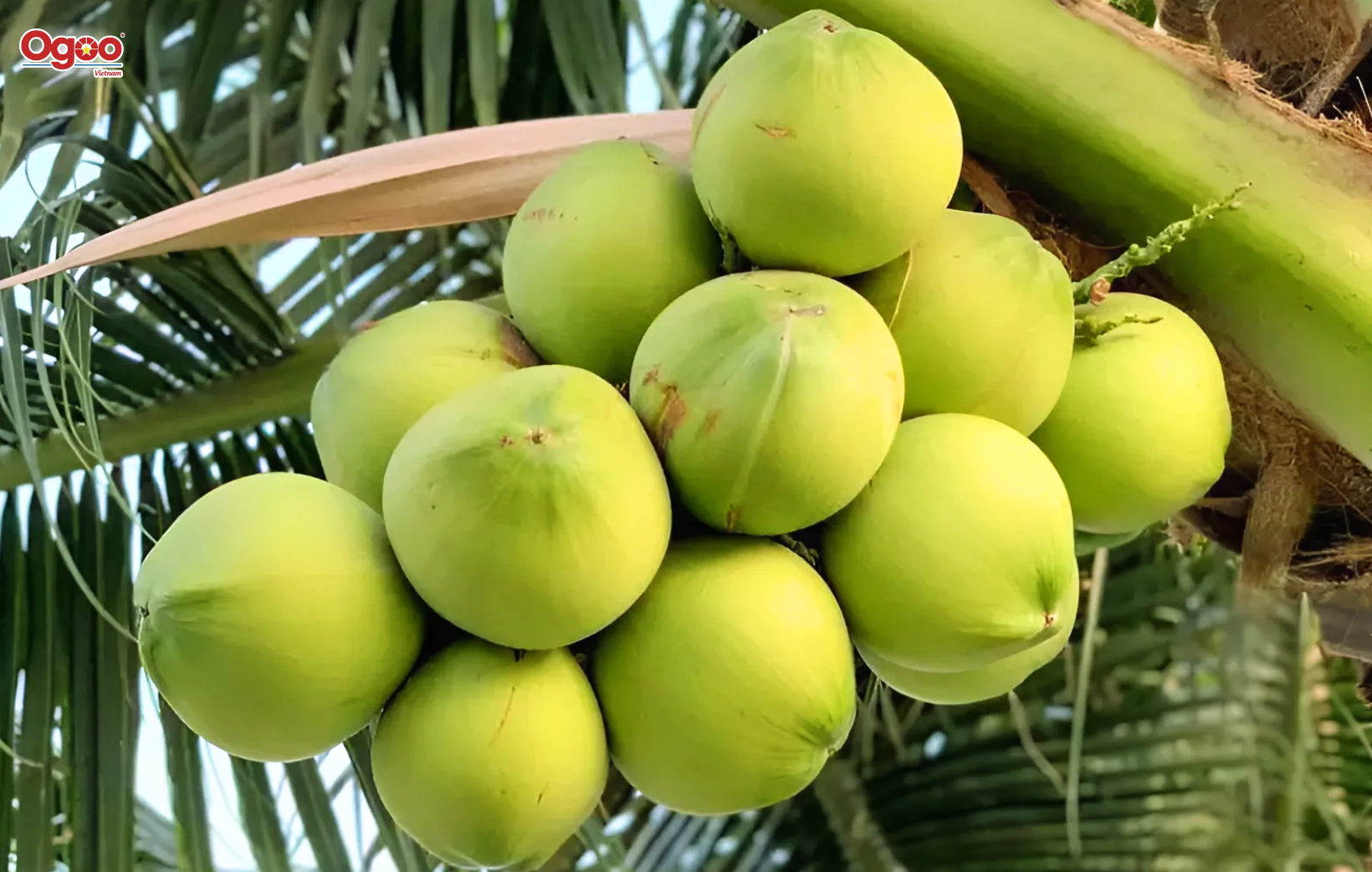 Fresh Young Coconut Cultivation
Fresh Young Coconut Cultivation
Young Coconut Appearance
Typically, a whole young coconut weighs around 1 to 1.5 kilograms (2.2 to 3.3 pounds), depending on its age and water content. This weight makes it relatively easy to handle and transport.
The outer shell of the young coconut is smooth and green when young, which gradually turns to a pale green or light brown as it matures. The green shell is relatively thin compared to other types of coconuts.
The husk is fibrous but thinner than mature coconut varieties, which makes the coconuts easier to cut open.
The inner flesh of a young coconut is soft, tender, and jelly-like, ranging from translucent to a slightly milky white color. It has a mildly sweet flavor and a delicate texture, making it easy to scoop out with a spoon.
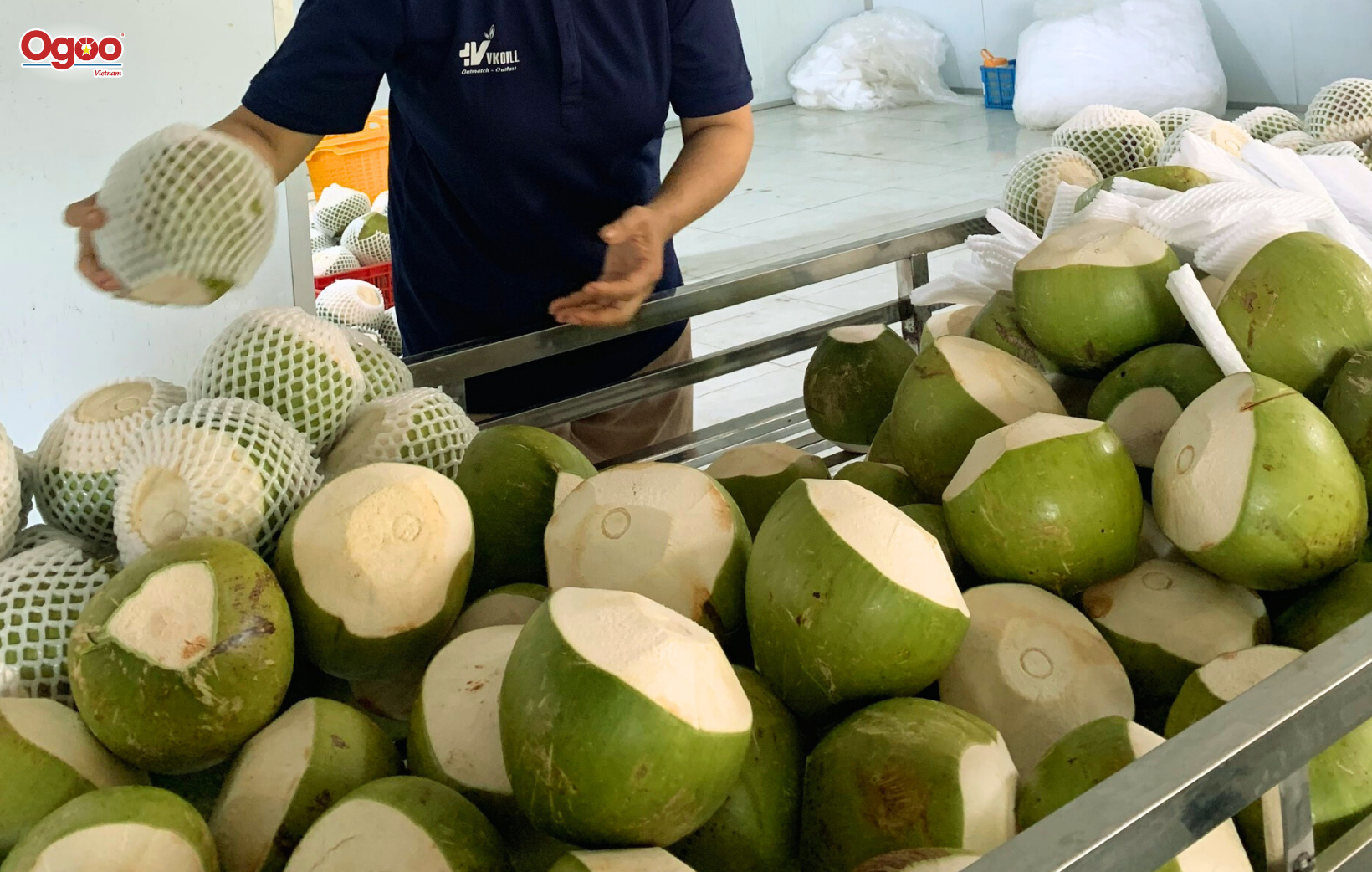 Fresh Young Coconut Appearance
Fresh Young Coconut Appearance
The Appeal of Vietnamese Fresh Coconut
The allure of Vietnamese fresh coconut lies in its refreshing, nutrient-rich water and versatile flesh. Coconut water is a natural source of hydration, rich in electrolytes like potassium and magnesium, making it a perfect beverage for rehydration. The soft, creamy flesh is a good source of healthy fats, protein, and fiber, ideal for adding to smoothies, salads, and a variety of dishes.
The Brix level of fresh coconut water typically ranges from 5 to 9 degrees Brix, depending on the variety and harvesting conditions. This natural sweetness, combined with its low-calorie content, makes fresh coconut an excellent choice for a healthy lifestyle.
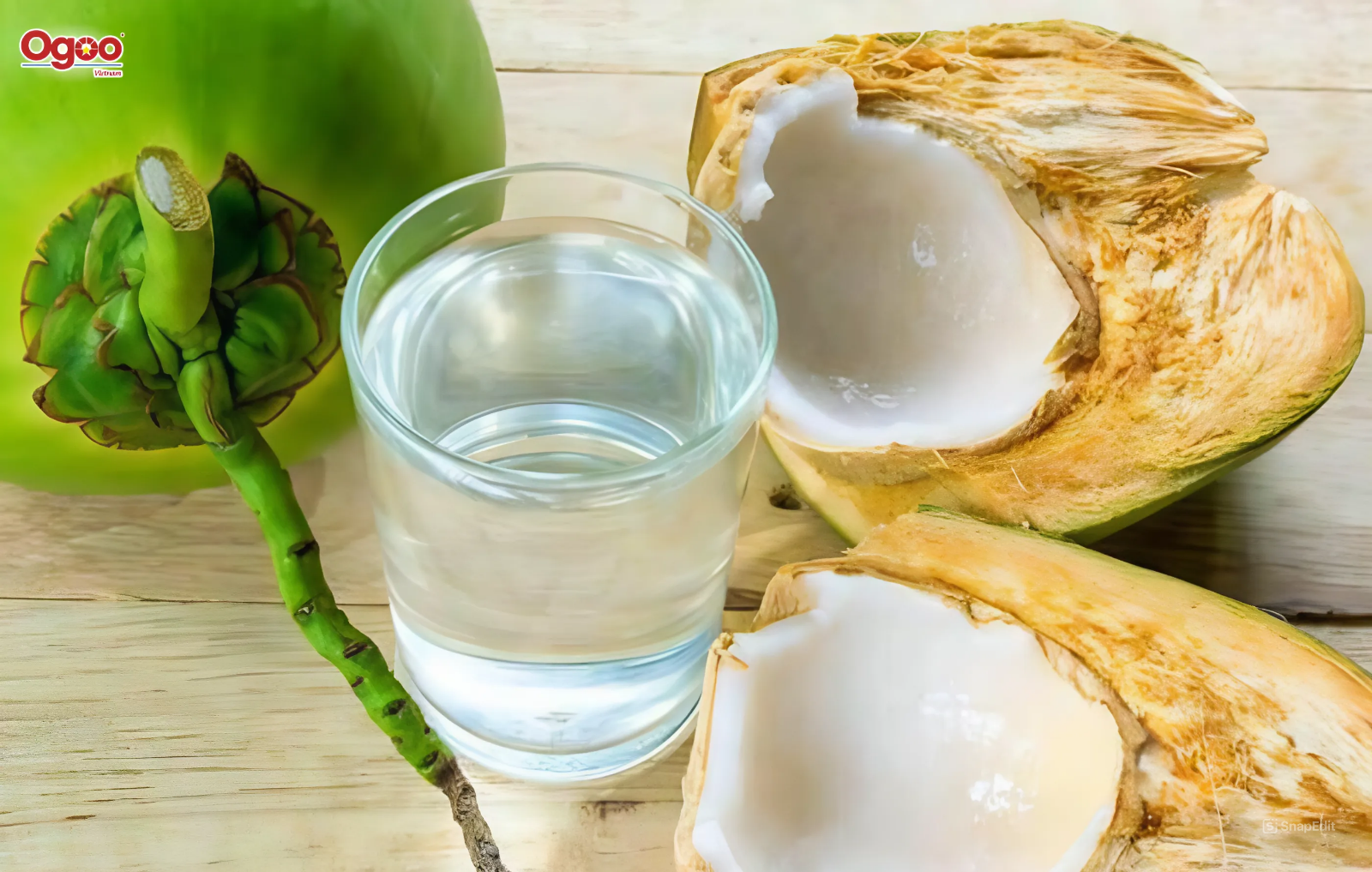 Fresh Young Coconut Appeal
Fresh Young Coconut Appeal
Fresh Young Coconut Export Standards
Fresh Young Coconut Certification
Vietnamese fresh coconuts are highly sought after in global markets due to their consistent quality and delicious taste. VKOILL COMPANY LIMITED adheres to strict food safety and quality standards, with certifications including VietGAP, GlobalGAP, HACCP, and ISO, ensuring our fresh coconuts meet the requirements of international customers.
Fresh Coconut Size Classification
To meet diverse market needs, fresh coconuts are classified into various sizes:
- Small (Size S): 0.8-1.0 kg/fruit
- Medium (Size M): 1.0-1.2 kg/fruit
- Large (Size L): 1.2-1.5 kg/fruit
This size classification helps in standardizing the fruit for local and international markets, ensuring quality and consistency.
Fresh Coconut Packing for Export
For export, fresh coconuts are packed in sturdy, clean cartons or boxes designed to protect them during transit. Each coconut may be individually wrapped to maintain freshness and quality. VKOILL Vietnam is dedicated to meeting the specific packaging requirements of each customer and import market, ensuring that our coconuts arrive in pristine condition and the best quality.
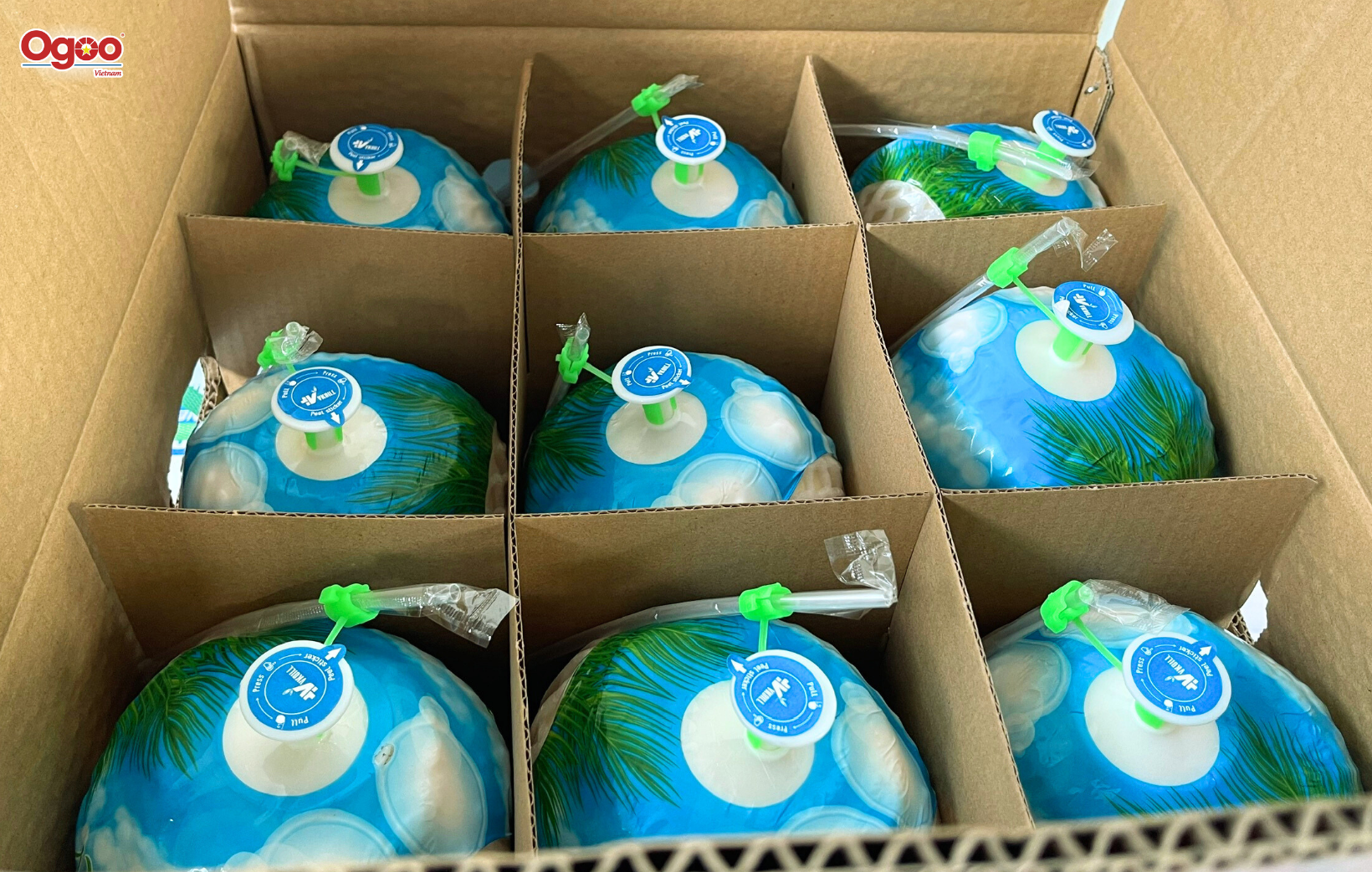 Fresh Young Coconut Packing for Export
Fresh Young Coconut Packing for Export
Health Benefits of Vietnamese Fresh Coconut
Vietnamese fresh coconut is not only delicious but also packed with numerous health benefits. Its water is a natural hydrator, rich in electrolytes and antioxidants, which support heart health, aid digestion, and enhance skin health. The flesh is a good source of medium-chain fatty acids, which are beneficial for metabolism and energy.
VKOILL Vietnam is proud to offer premium-quality fresh coconuts to our valued customers and partners worldwide, meeting export standards to markets such as the US, Oceania, Europe, Canada, Russia, South Korea, Japan, and the Middle East.
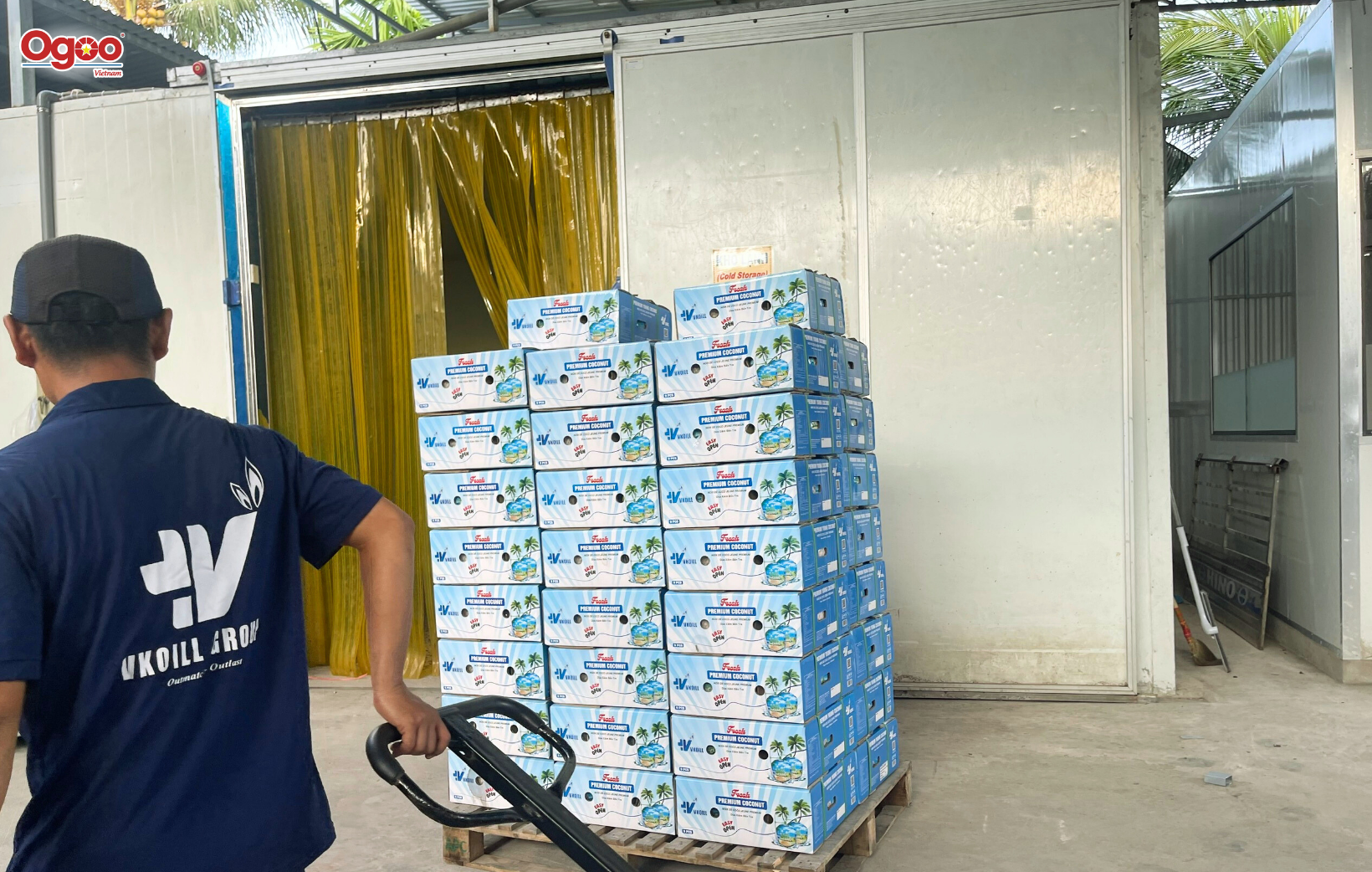 Fresh Young Coconut for Export
Fresh Young Coconut for Export
We are happy to advise and provide you with further information.
If you are interested in importing Vietnamese Young Coconut from VKOILL, please contact our export department at:
VKOILL COMPANY LIMITED
Email: info@vkoillgroup.com
WhatsApp: +84 35 7134 988
Website: www.vkoillgroup.com


